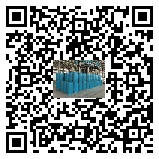The magical role of dispersants in coatings
Coatings, as an indispensable material in modern industry and daily life, the quality of their performance is
directly related to the quality and aesthetics of the product. In the production and
application of coatings, dispersants play a vital role.
1. Definition and function of dispersants
Dispersants, also known as wetting dispersants, are chemical additives that can significantly improve the
dispersibility of solid particles such as pigments and fillers in the medium. One end of
its active group can be adsorbed on the surface of solid particles, and the other end is solvated into the
medium to form an adsorption layer, generating charge repulsion or entropy repulsion,
so that the solid particles can be dispersed and suspended in the medium for a long time to avoid re-flocculation.
This mechanism ensures the storage stability and performance of the coating system.
2. Application of dispersants in coatings
Improving pigment dispersibility
In the production process of coatings, pigments and fillers are often easy to agglomerate, resulting in uneven
dispersion of coatings. The addition of dispersants can effectively reduce the
surface tension of solid particles such as pigments and fillers, and promote their uniform dispersion in coatings.
This not only improves the uniformity and stability of the coating, but also
significantly improves the appearance and touch of the coating.
Improve coating performance
Dispersants can not only improve the dispersibility of pigments, but also significantly improve the viscosity, fluidity,
drying and other properties of coatings. By forming a stable suspension
system, dispersants help maintain the stability and uniform dispersion characteristics of coatings, thereby extending
the shelf life of coatings. In addition, dispersants can optimize the
construction performance of coatings, make spraying or brushing smoother, and improve construction efficiency and quality.
Reduce costs and energy consumption
The use of dispersants can also significantly reduce production costs and energy consumption. By using dispersants,
the dispersion process of solid particles such as pigments and fillers can
be shortened, and production efficiency can be improved. At the same time, dispersants can also optimize coating
formulations and reduce the use of unnecessary additives, thereby reducing
costs.
3. Types and selection of dispersants
There are many types of dispersants. According to different chemical structures and mechanisms of action, they can
be divided into anionic, cationic, nonionic, amphoteric, electrically neutral
and polymer types. Different types of dispersants have different characteristics and scopes of application.
Anionic dispersants
Anionic dispersants have good compatibility and are widely used in water-based coatings and inks. Its active groups are
usually carboxylates, sulfates or sulfonates, etc., which can form a
stable adsorption layer with the pigment surface, generate charge repulsion, and stabilize the pigment particles.
Cationic dispersants
Cationic dispersants have strong adsorption and good dispersing effects on carbon black, various iron oxide pigments, and
organic pigments. However, it should be noted that it reacts
chemically with the carboxyl group in the base material and avoids using it with anionic dispersants at the same time.
Nonionic dispersants
Nonionic dispersants are not ionized and have no charge in water, and are mainly used in water-based coatings. It has a strong ability to reduce surface tension and improve wettability, and is
often used in combination with anionic dispersants as a wetting agent or emulsifier.
Polymeric dispersants
Polymeric dispersants have the best stability and are widely used in various coating systems. One end of its anchoring group is
entangled with the resin for adsorption, and the other end is
attached to the pigment particles to form a stable suspension system.
When selecting a dispersant, it is necessary to comprehensively consider factors such as the type of coating, the type of pigment,
and the production process to select the most appropriate
type and amount of dispersant.
4. Application prospects and challenges of dispersants
With the continuous advancement of science and technology and the vigorous development of the coatings industry, the application
scope of dispersants will be further expanded. Against
the background of increasingly stringent environmental regulations, the development of environmentally friendly and high-performance
dispersants has become an inevitable trend in the
development of the industry. At the same time, the research and development of dispersants for different fields and specific needs will
also become a research hotspot in the future.
However, the application of dispersants also faces some challenges. For example, the compatibility of dispersants with coating systems
and the mechanism of the influence of dispersants on
coating performance still need to be studied in depth. In addition, how to reduce costs and improve production efficiency are also issues
that need to be solved in the research and
development and application of dispersants.
5. Conclusion
The application of dispersants in coatings not only improves the performance and quality of coatings, but also reduces production costs and
energy consumption. With the continuous
advancement of science and technology and the continuous development of the coatings industry, the application prospects of dispersants
will be broader. In the future, we will continue to
explore and innovate the technology and application fields of dispersants and contribute more to the development of the coatings industry.


